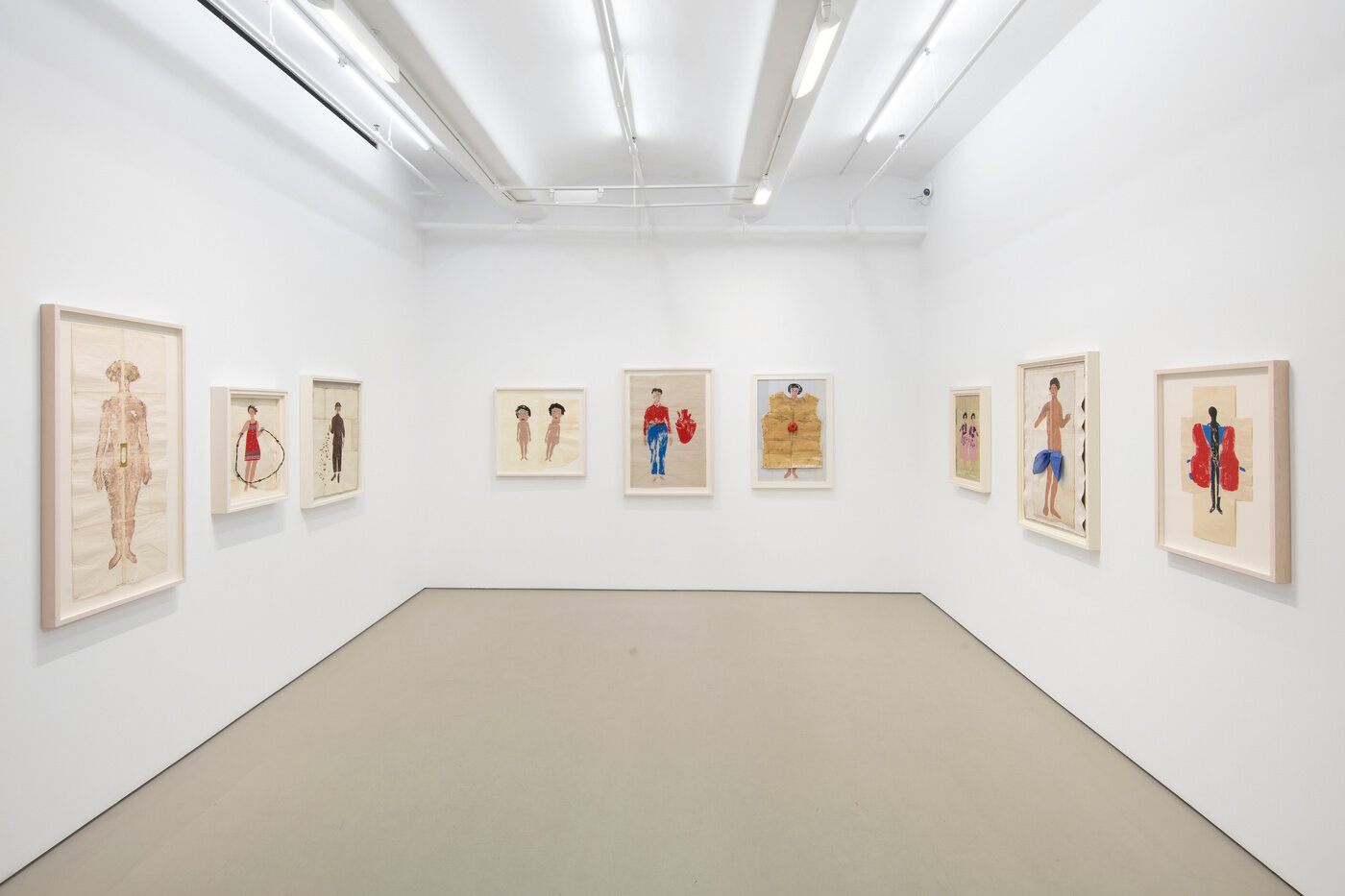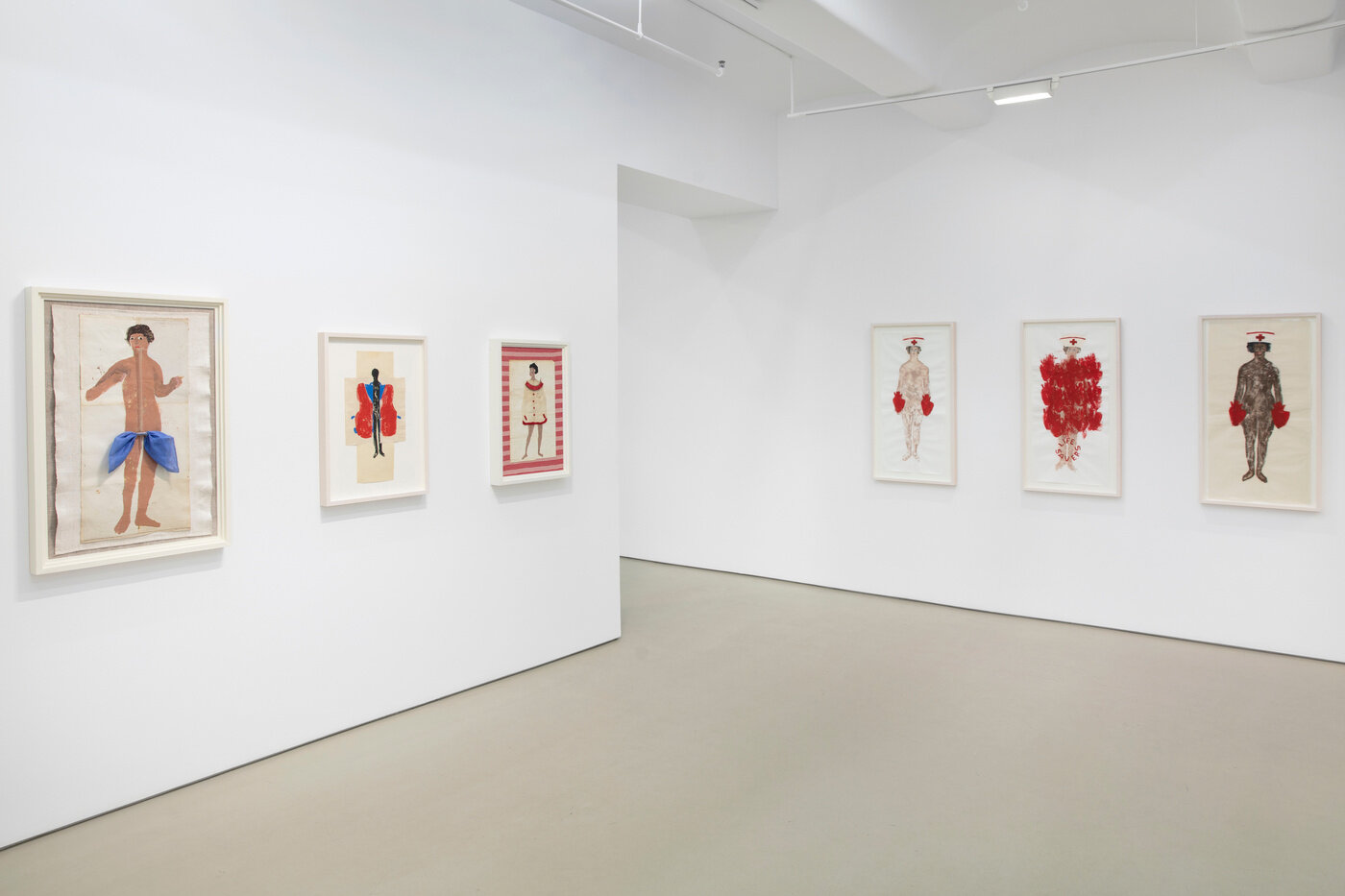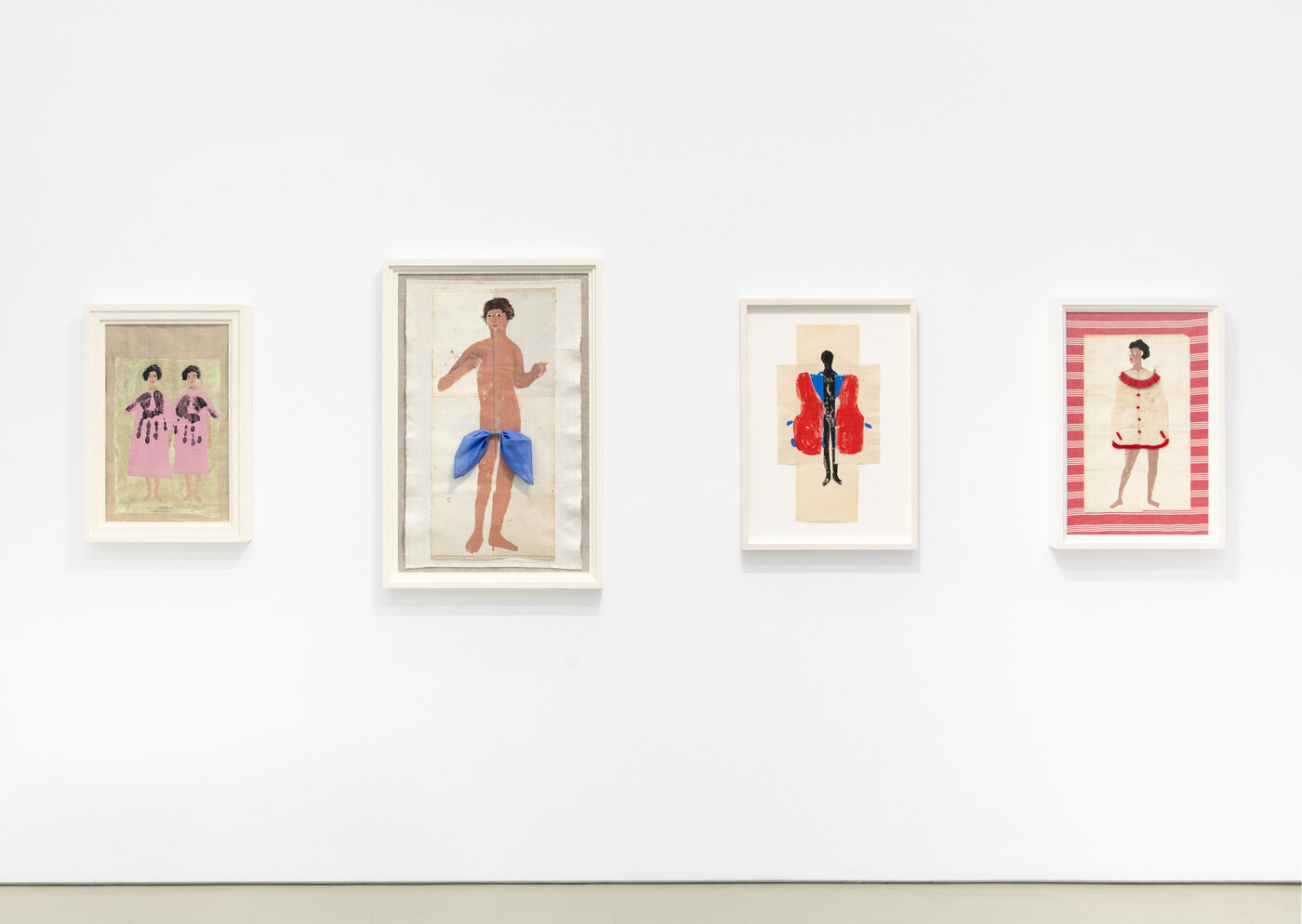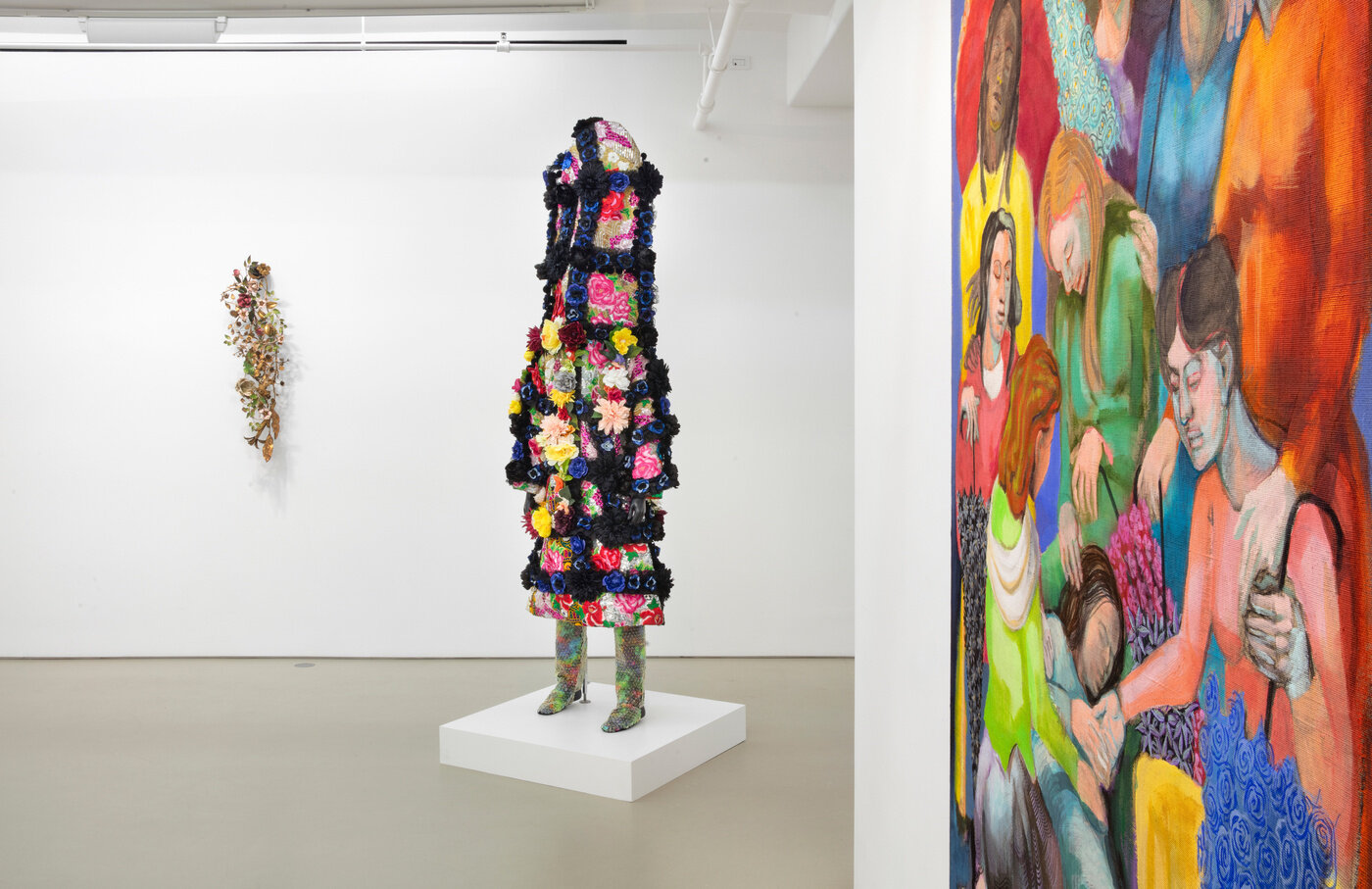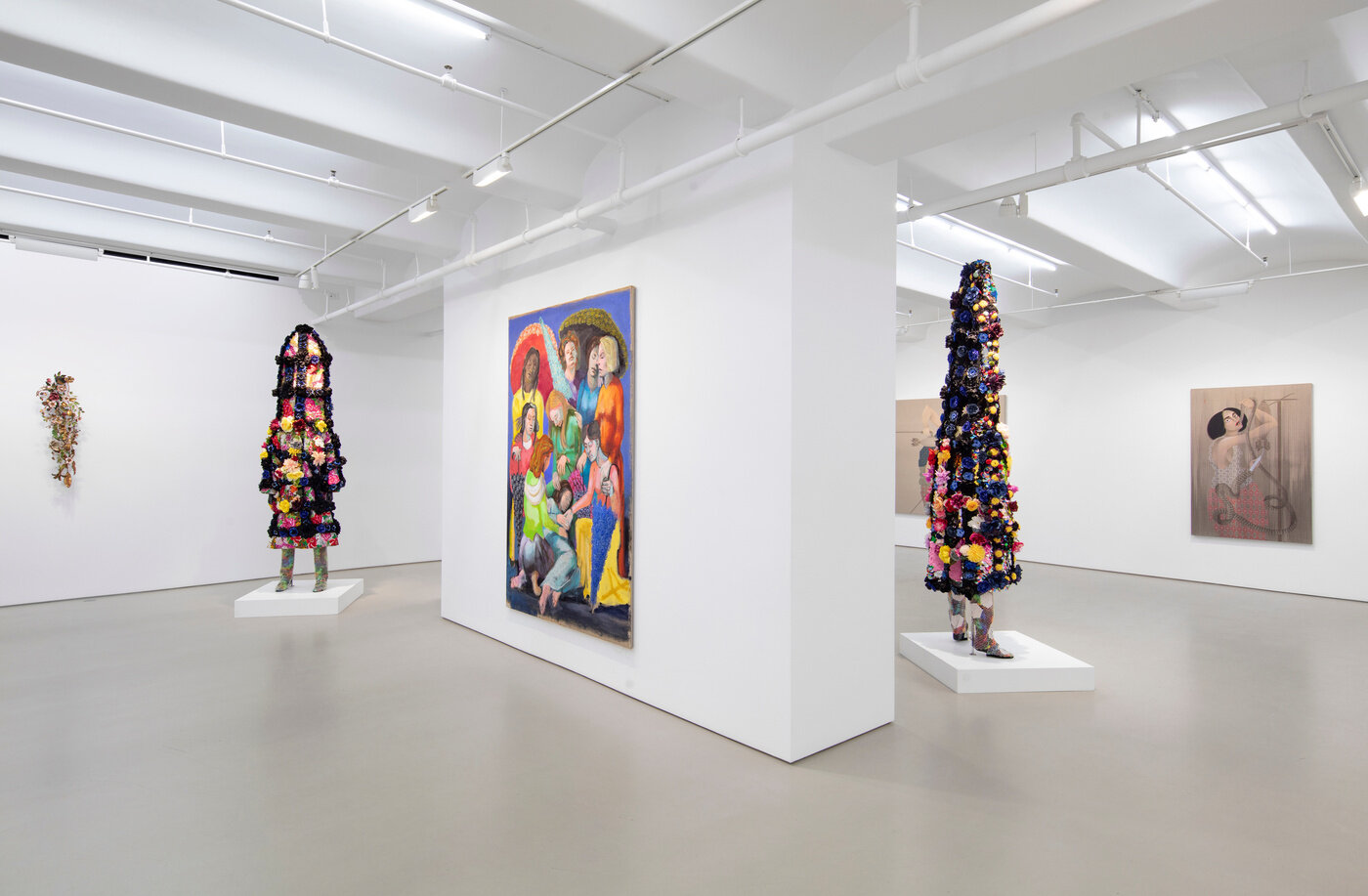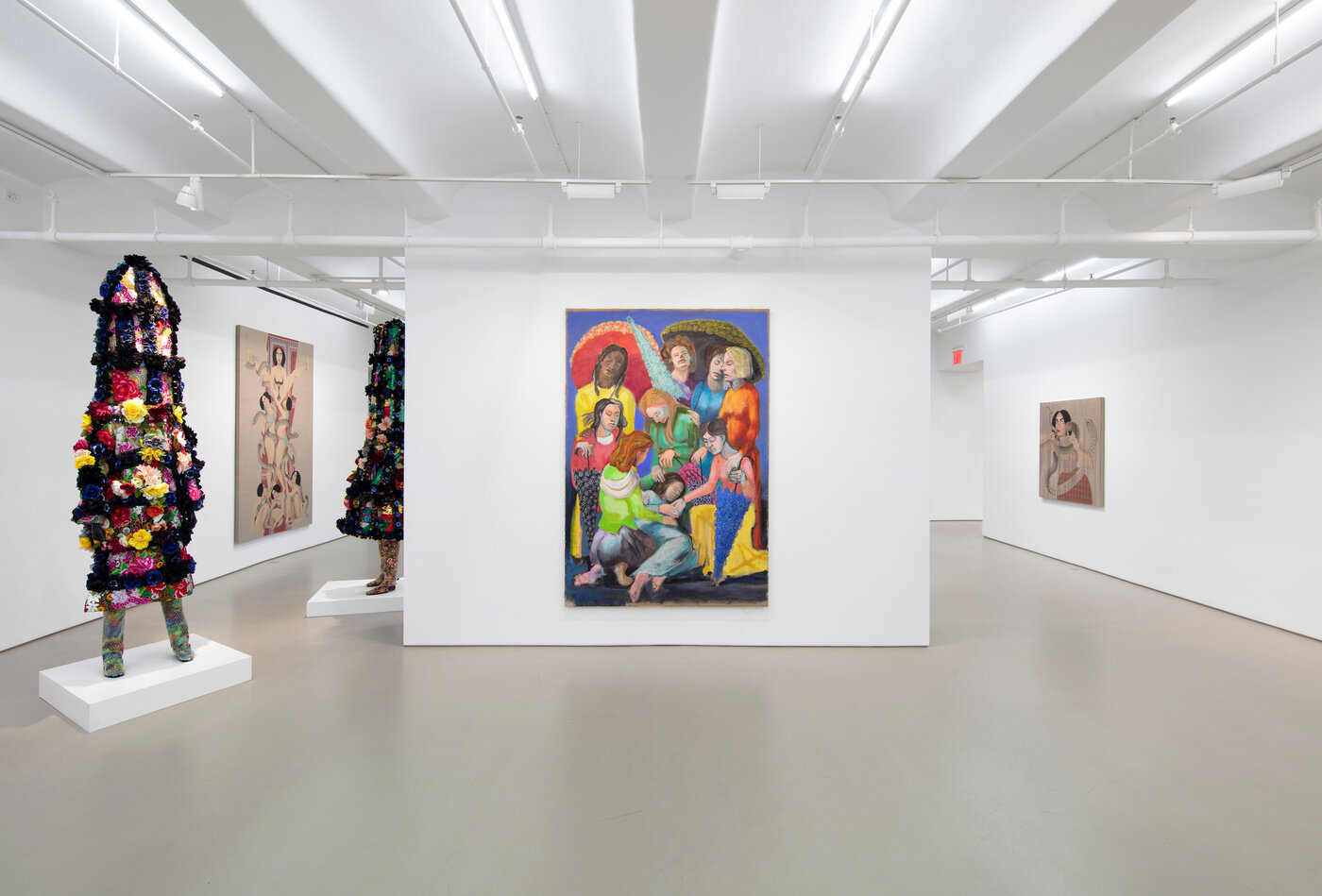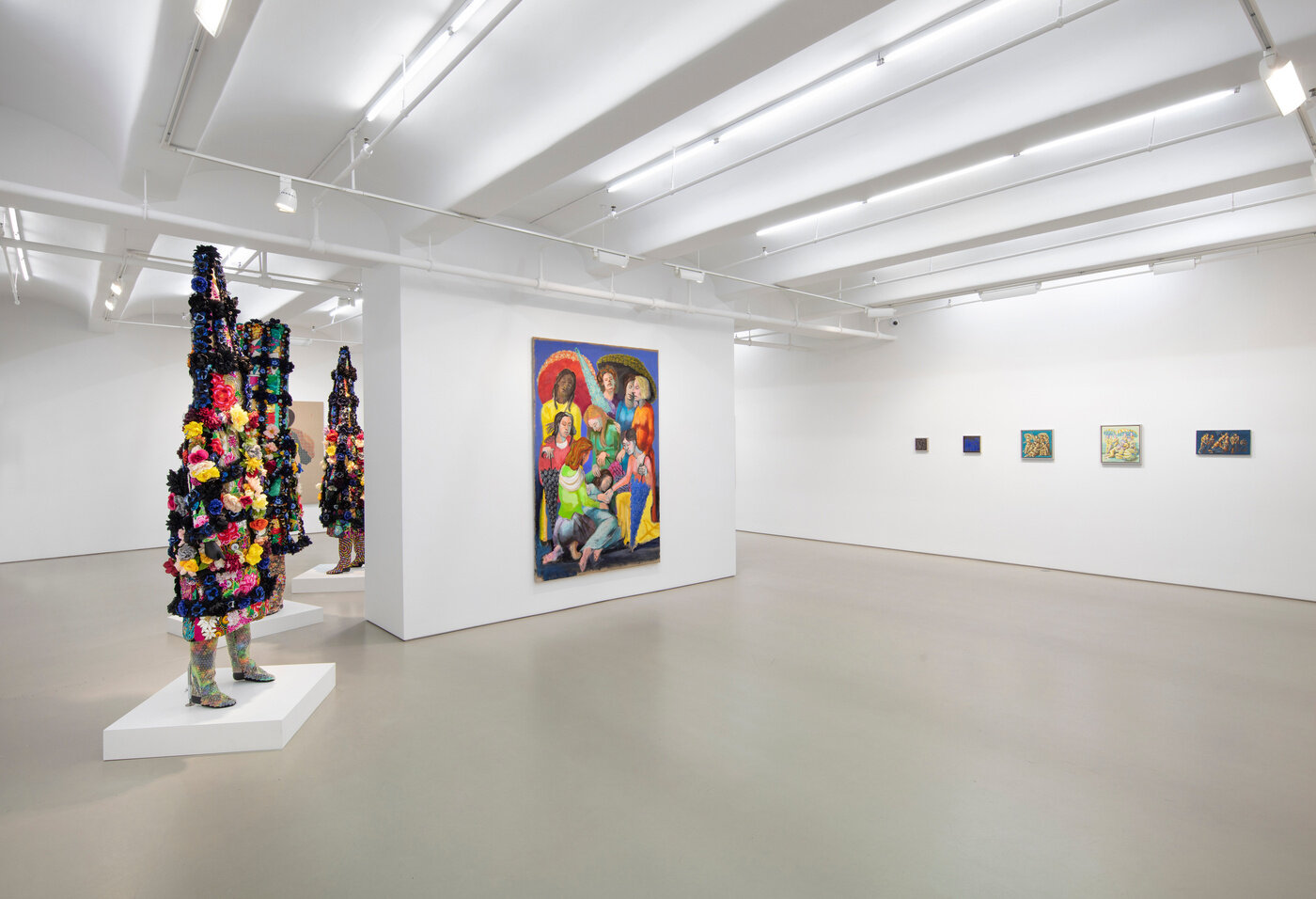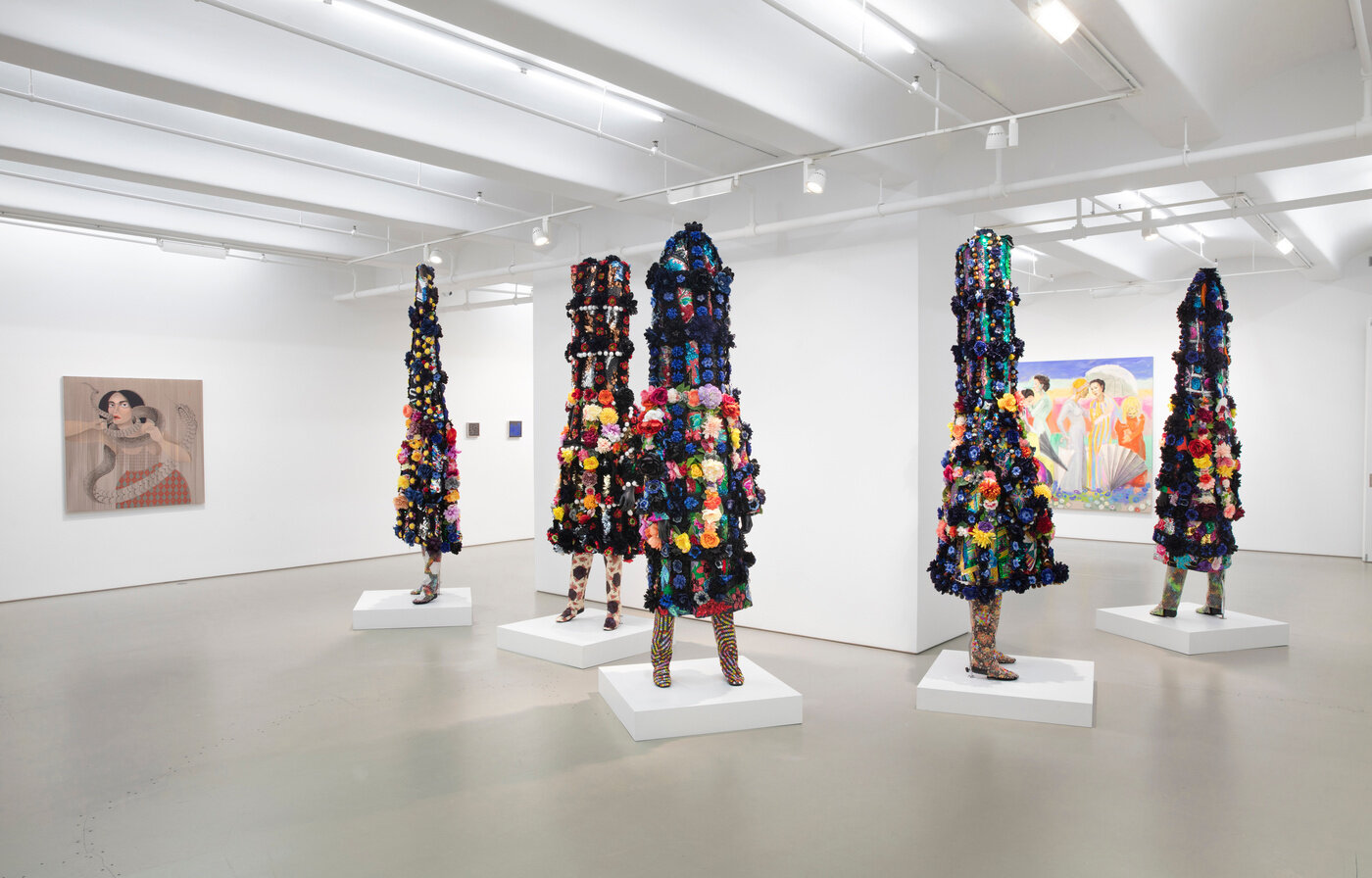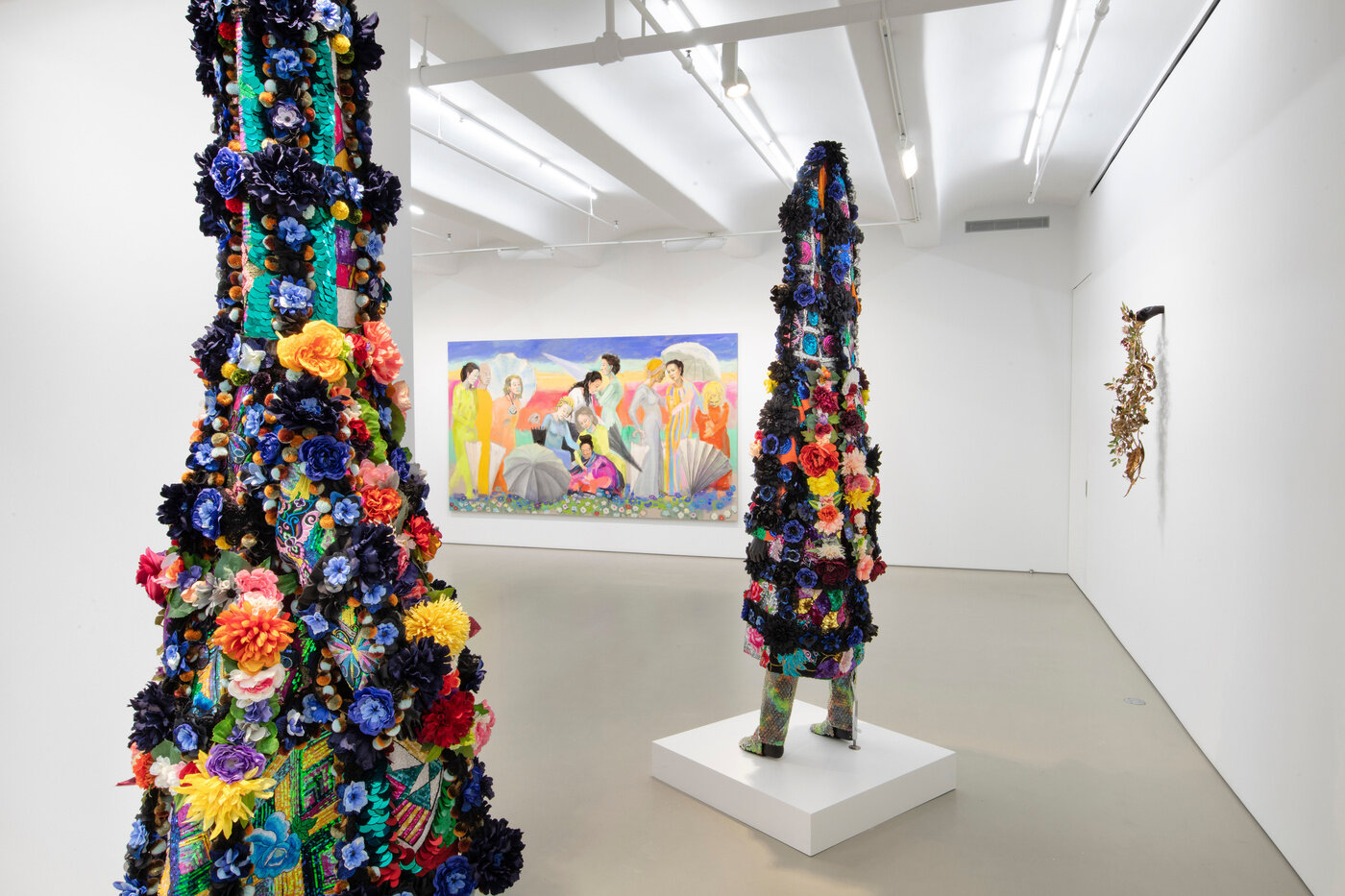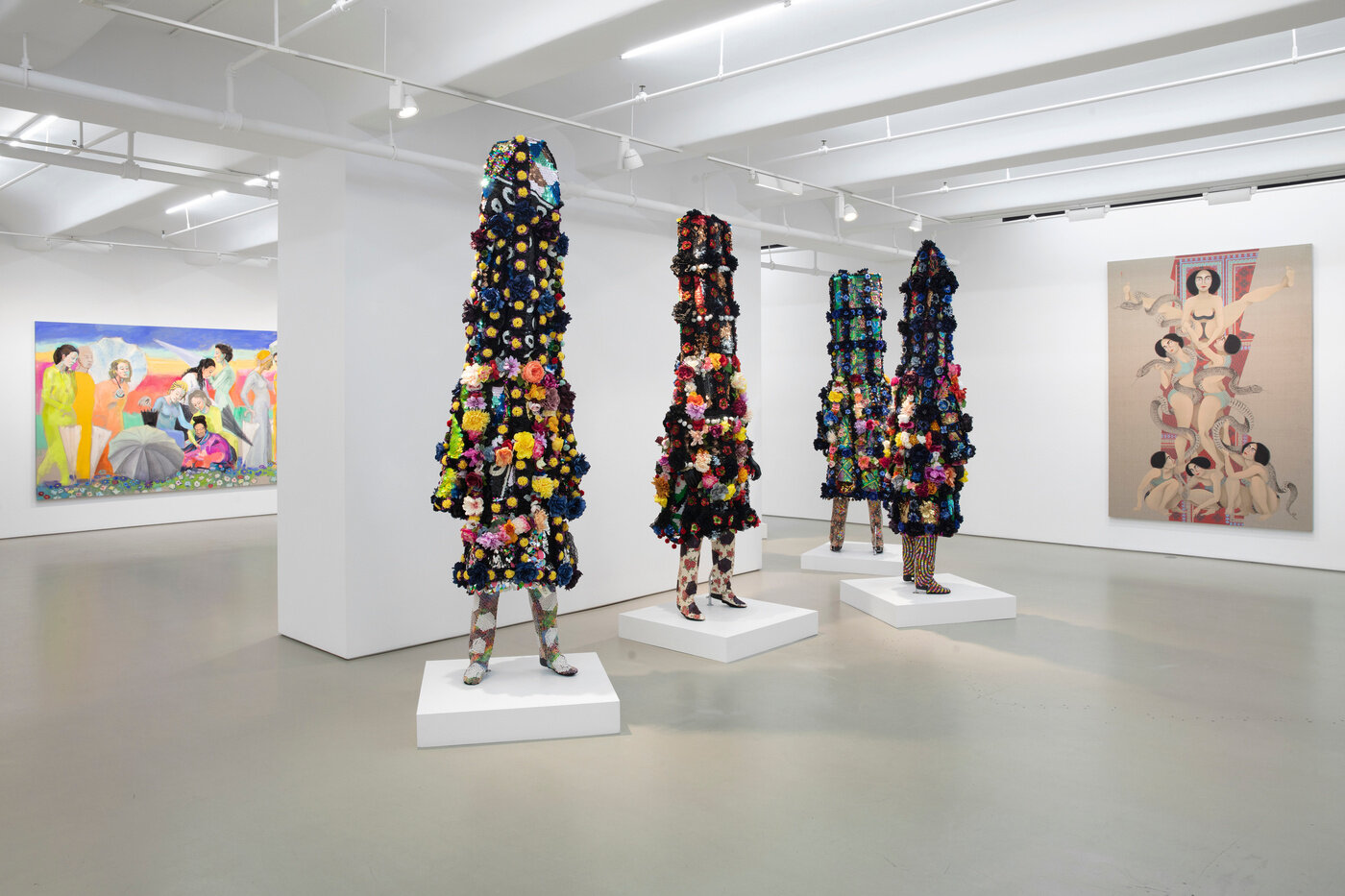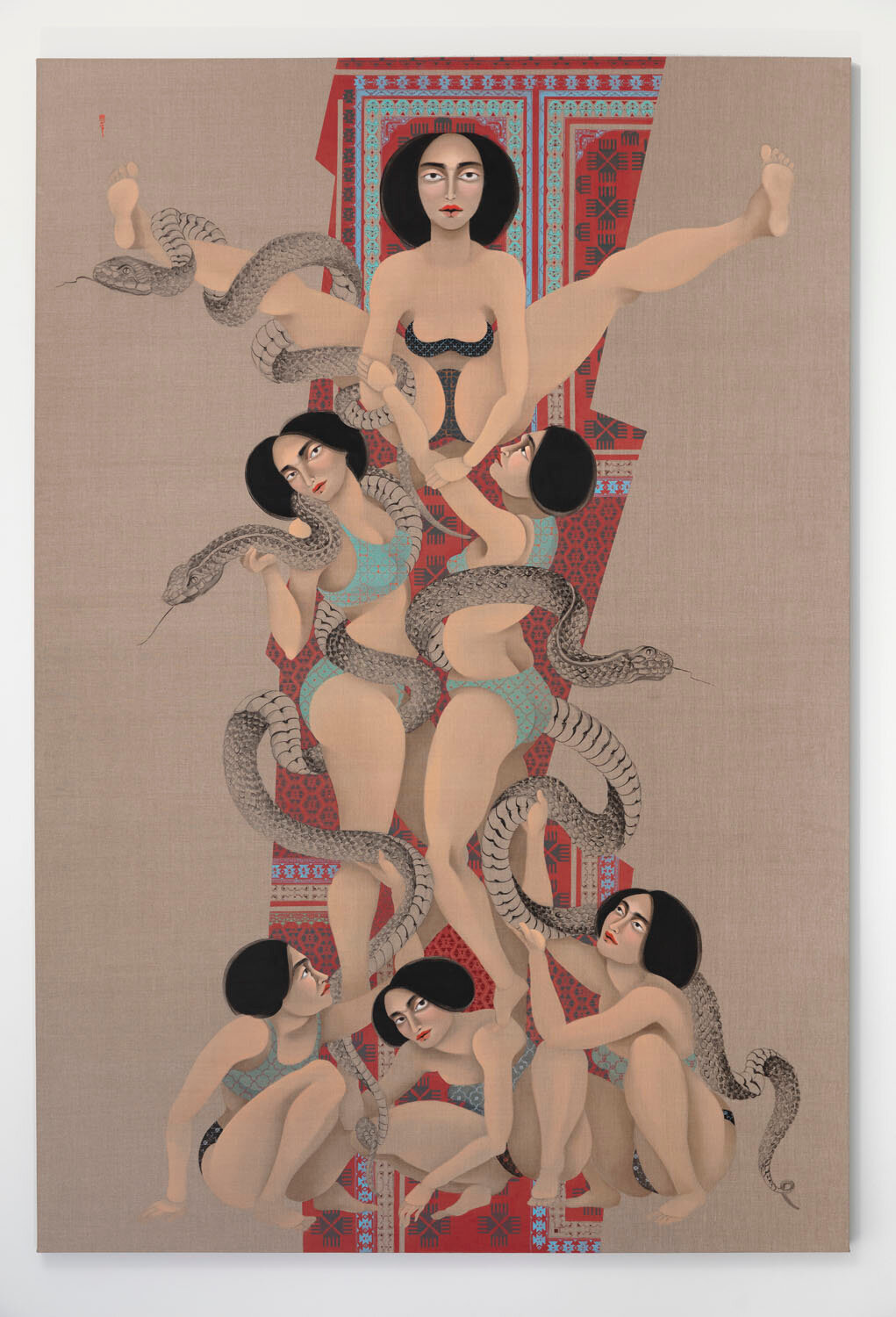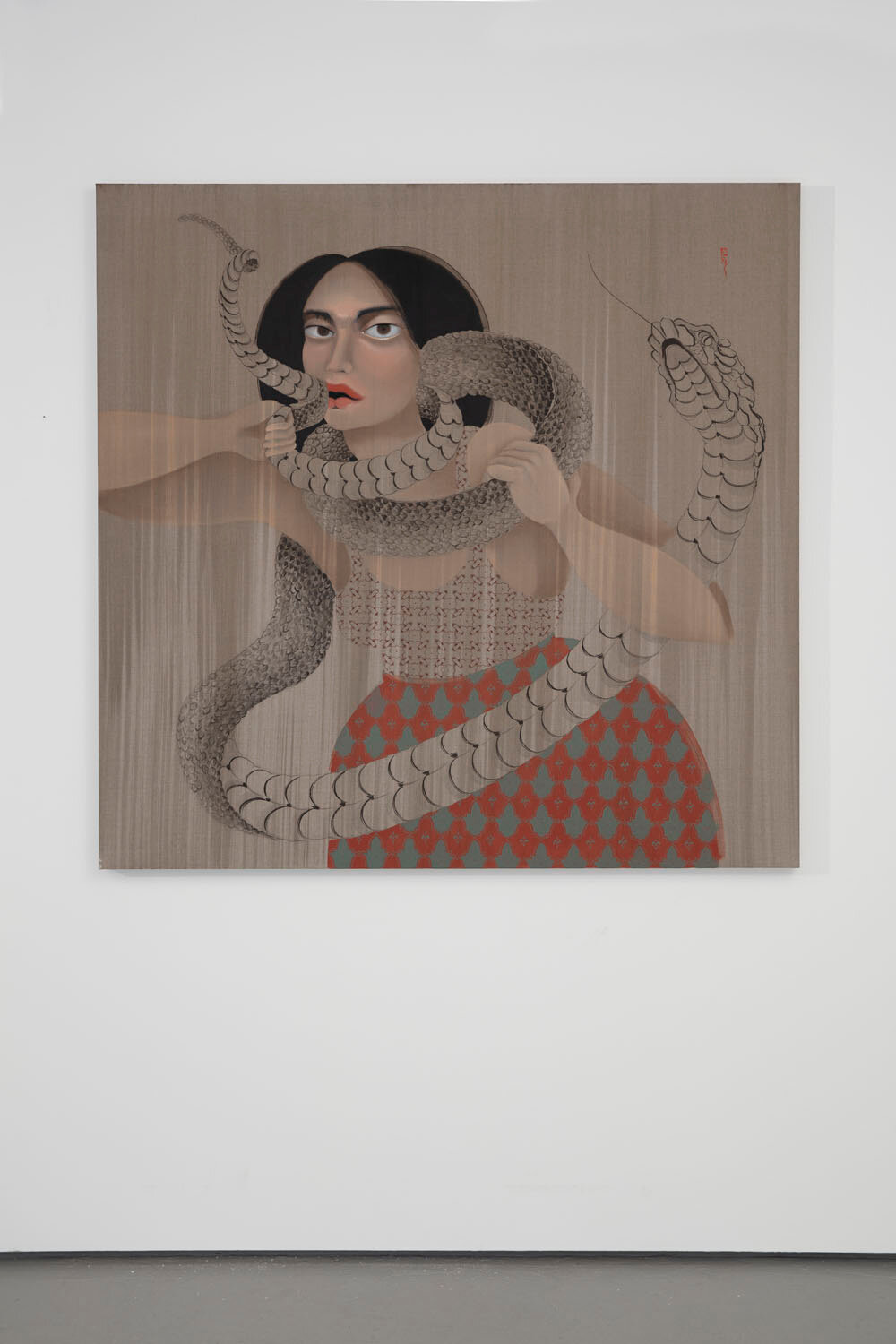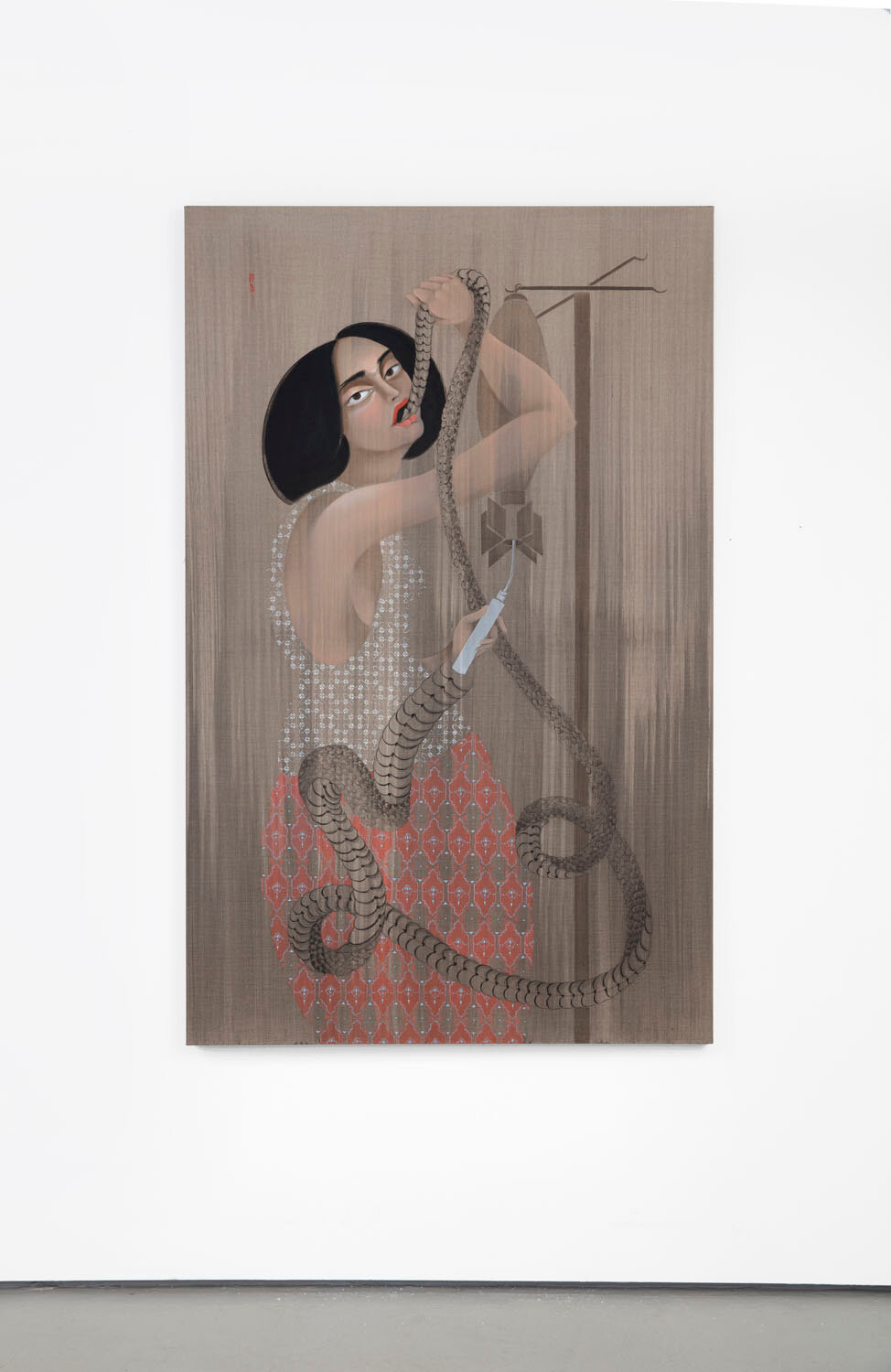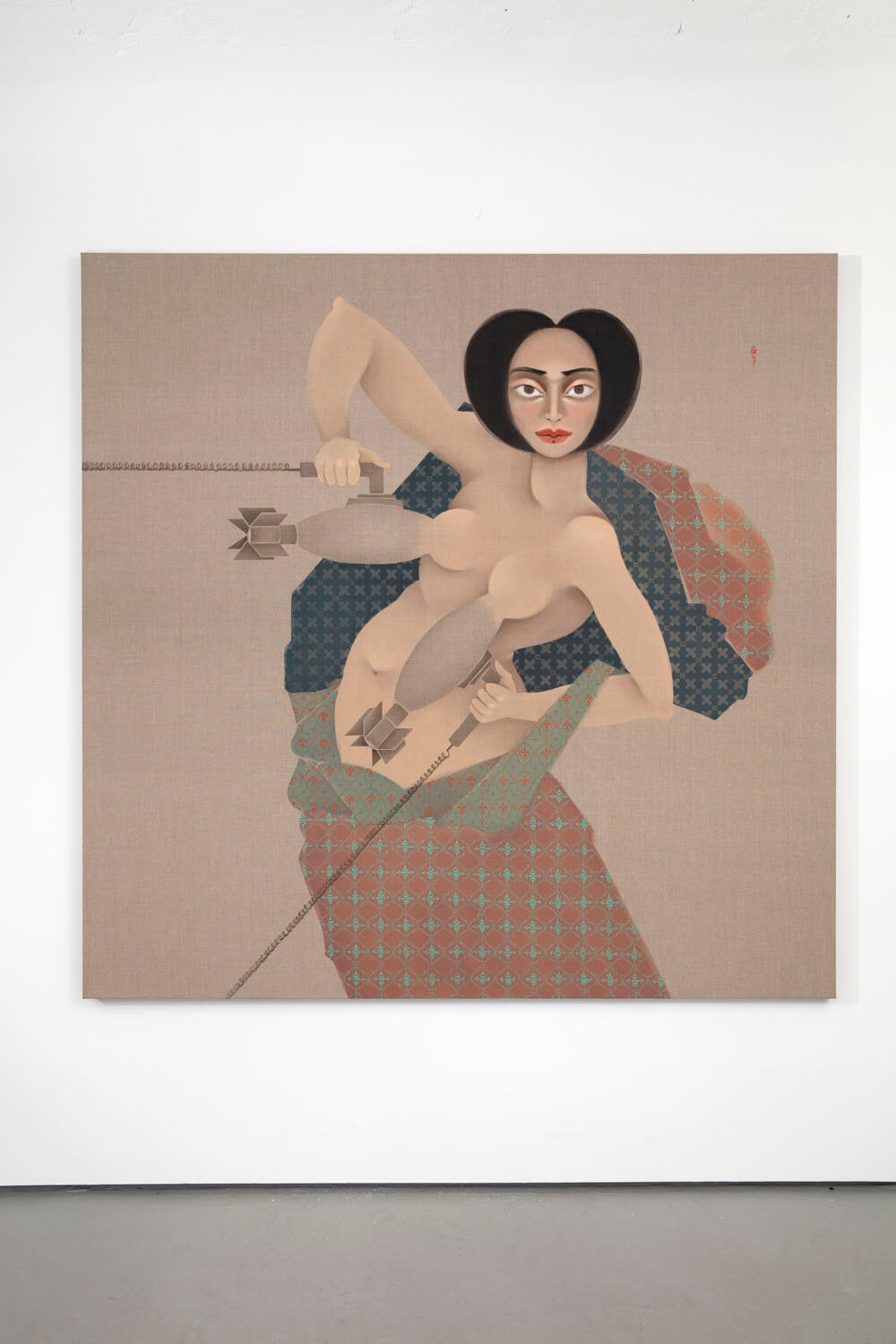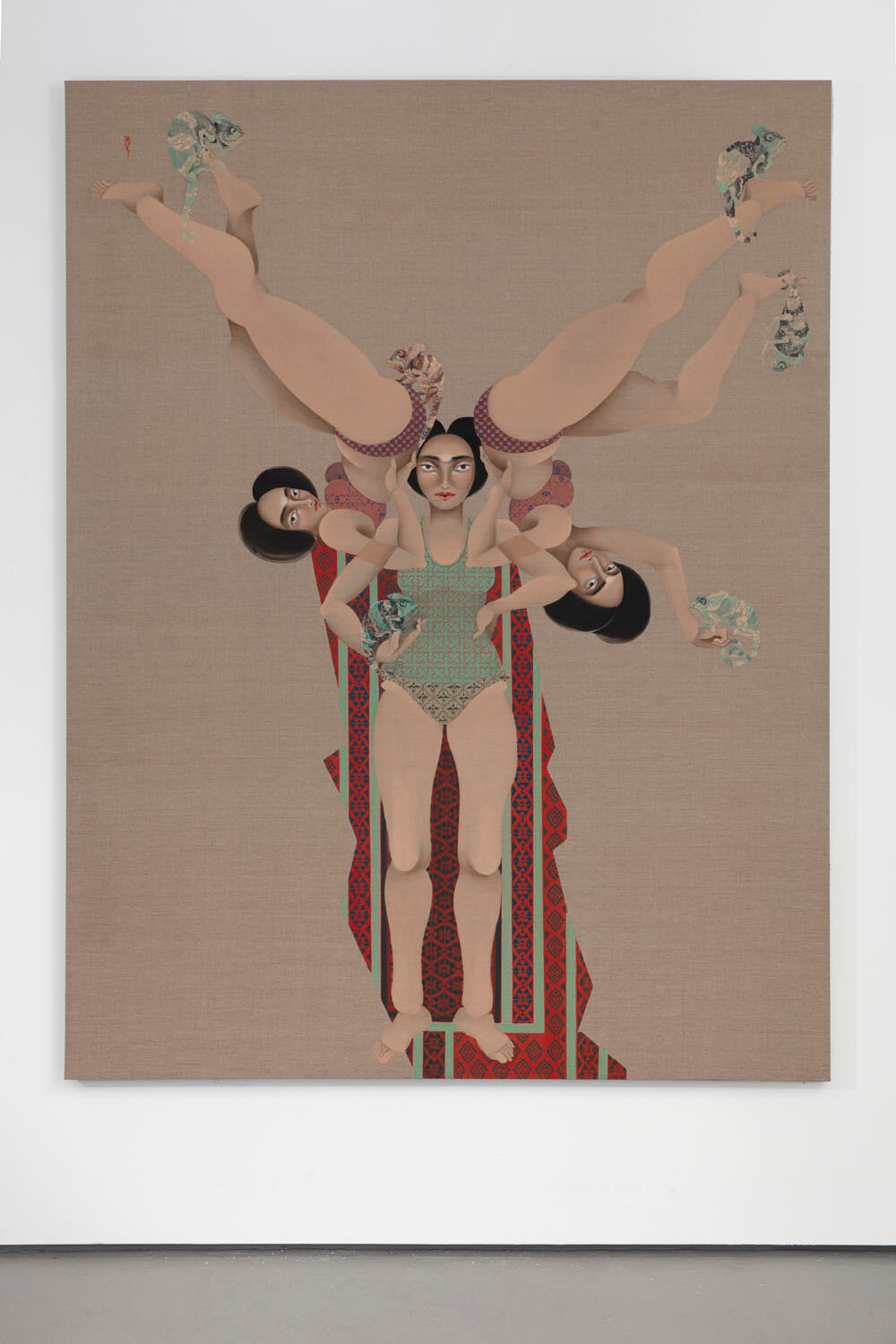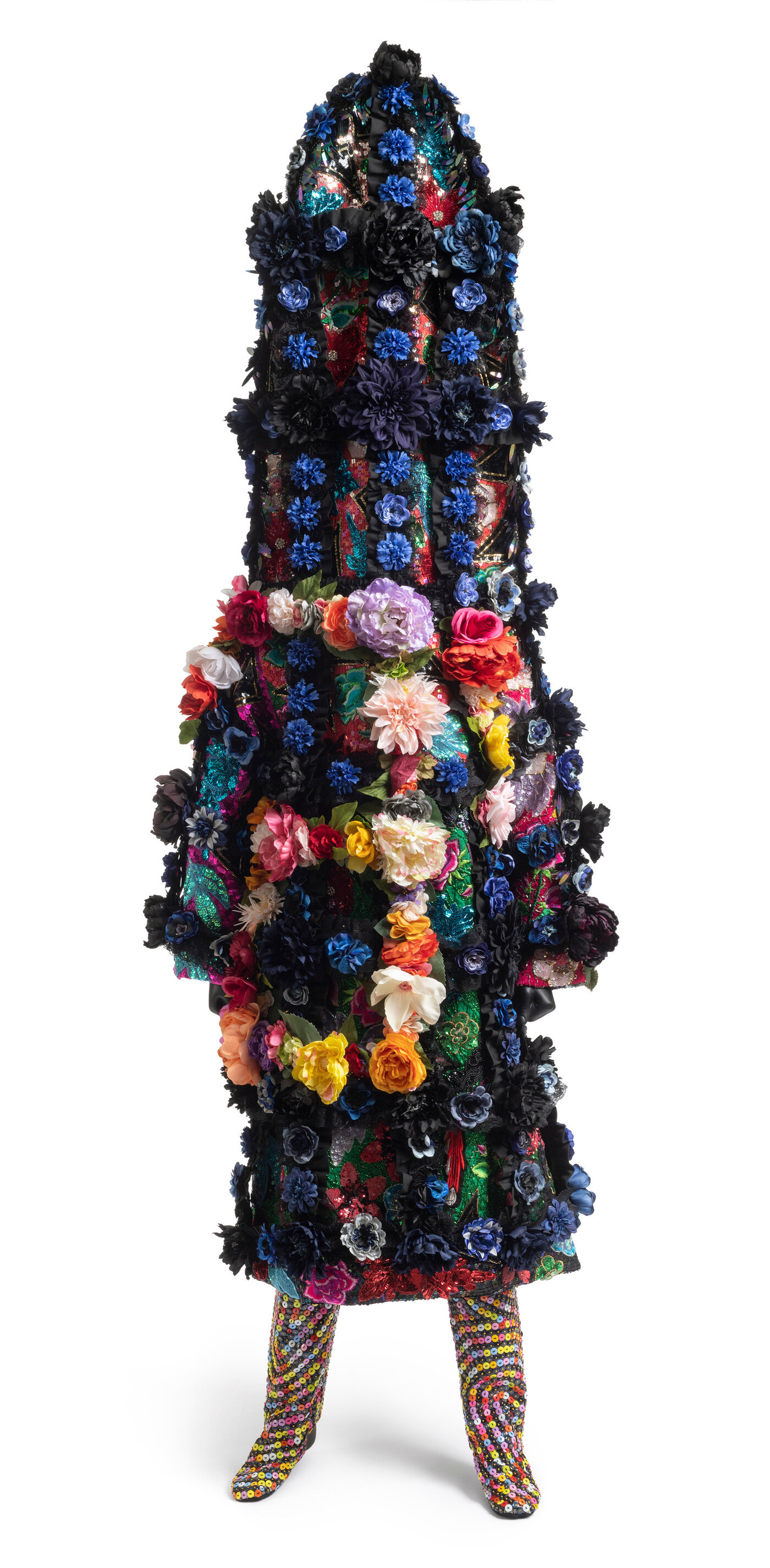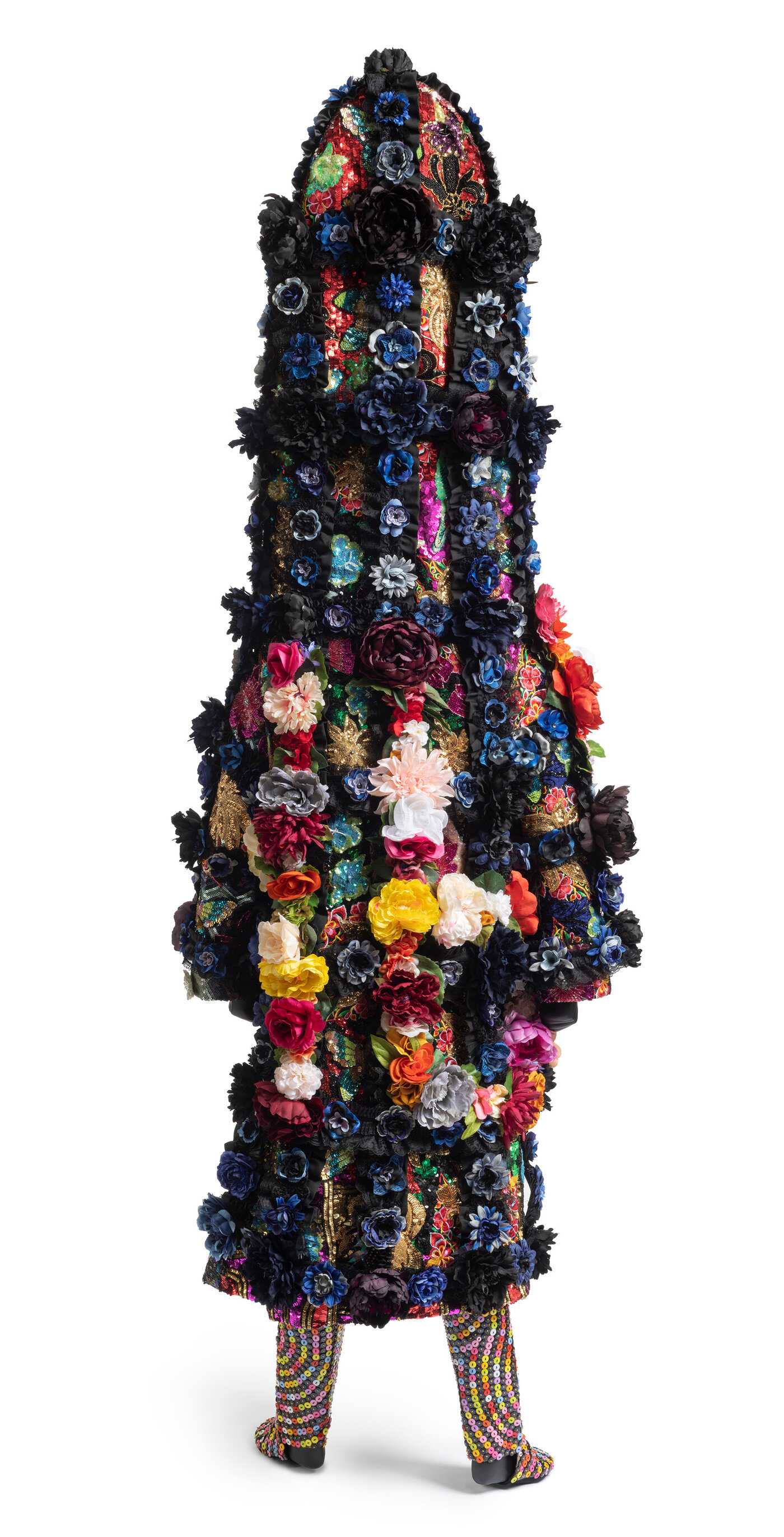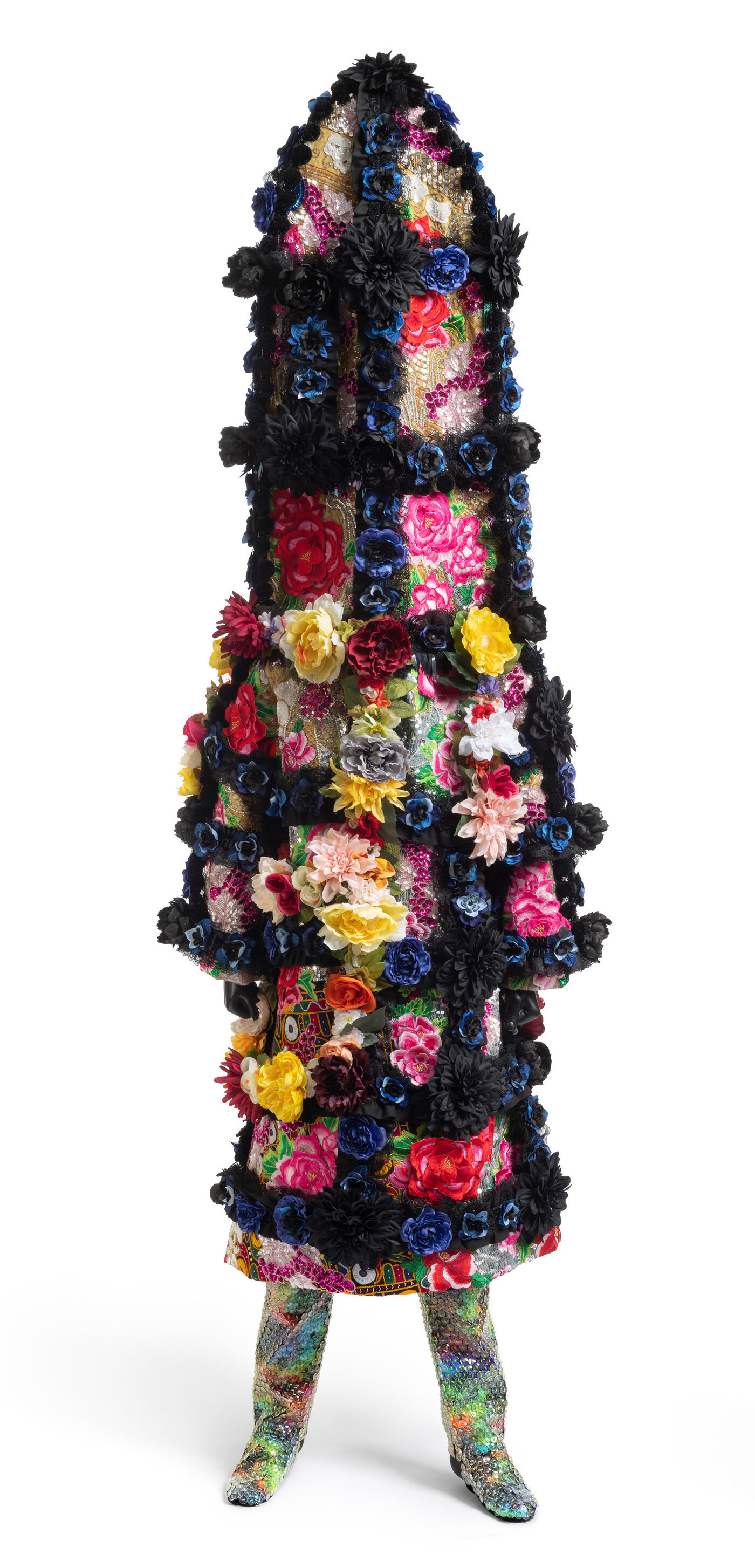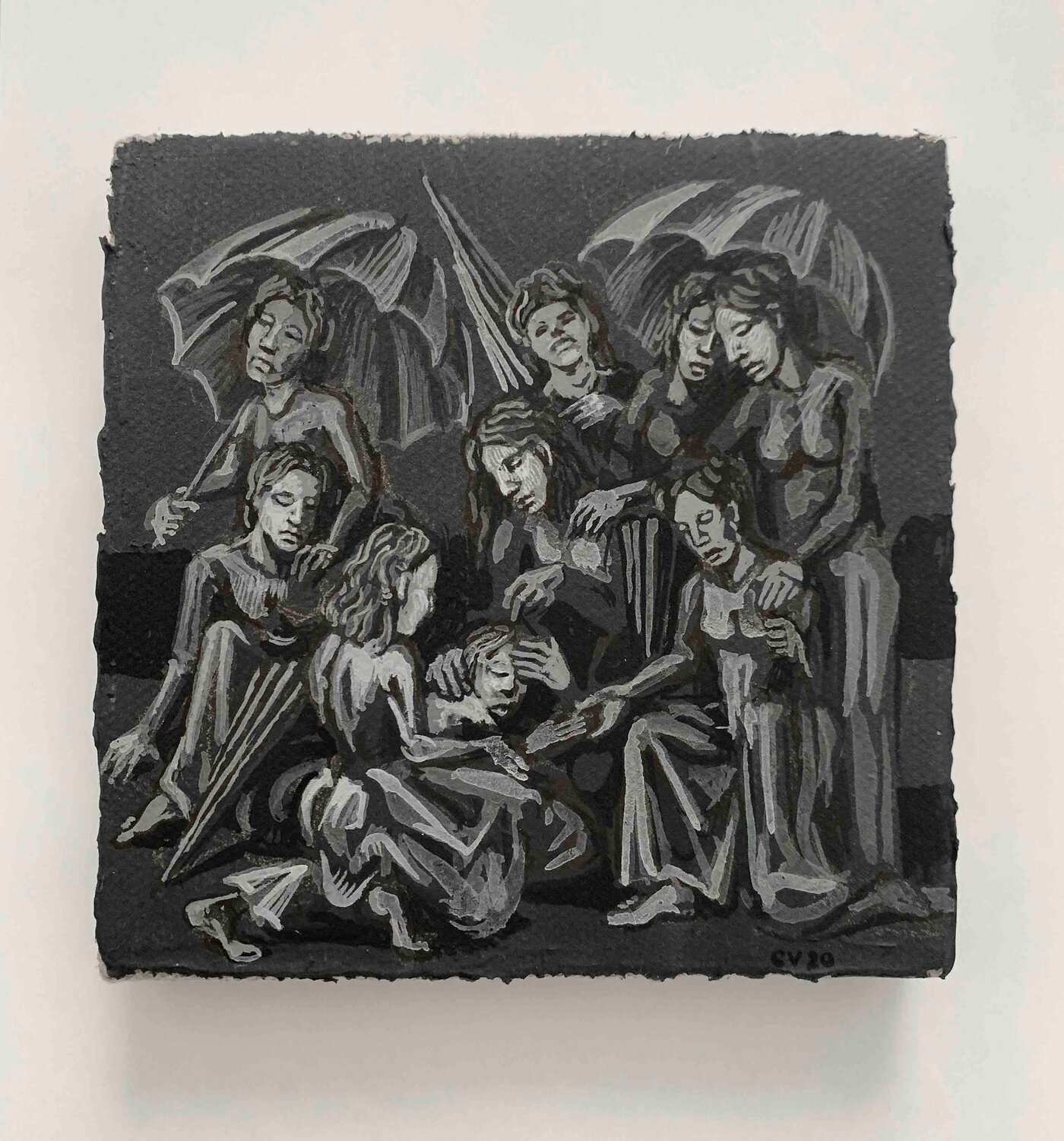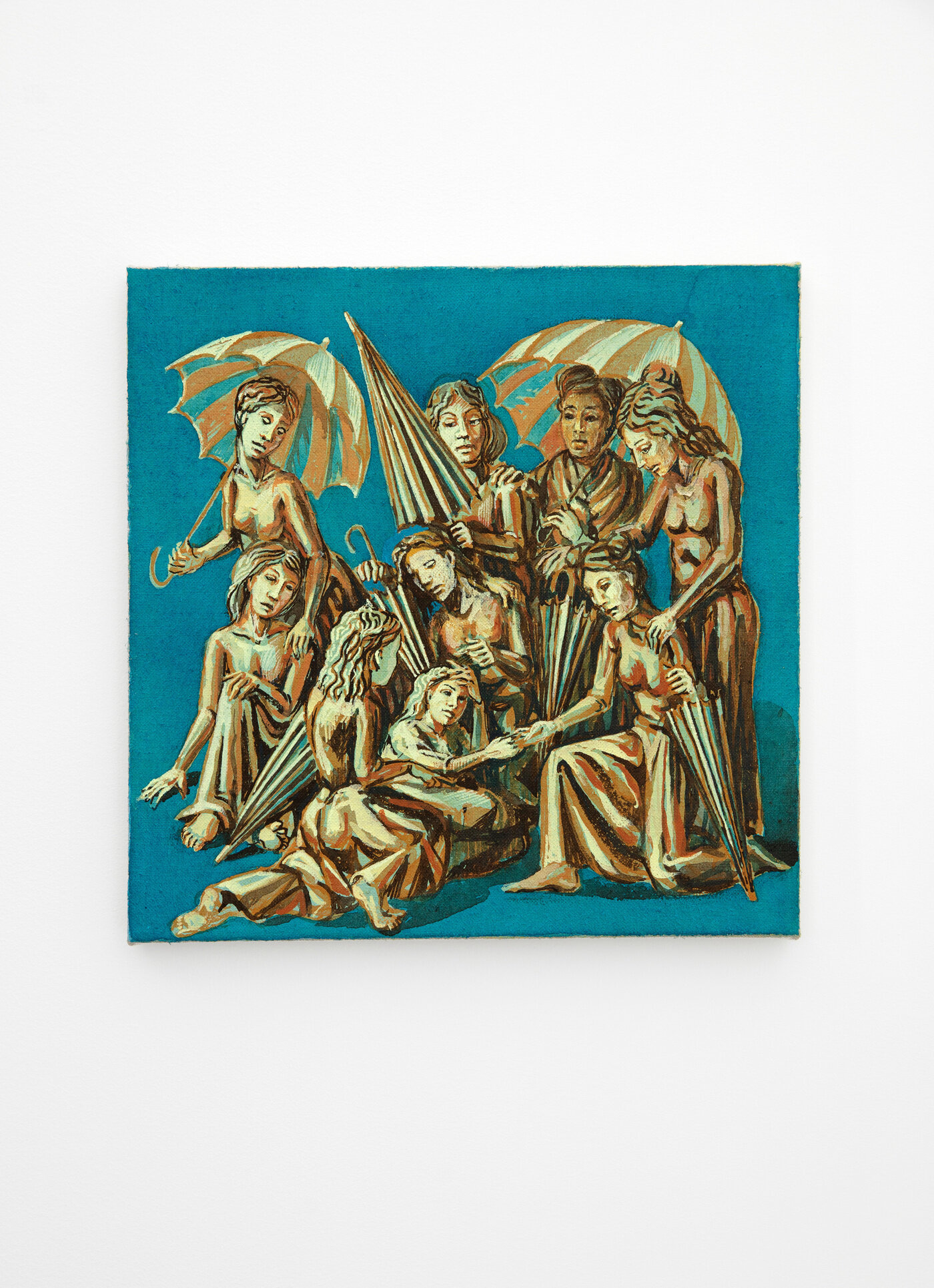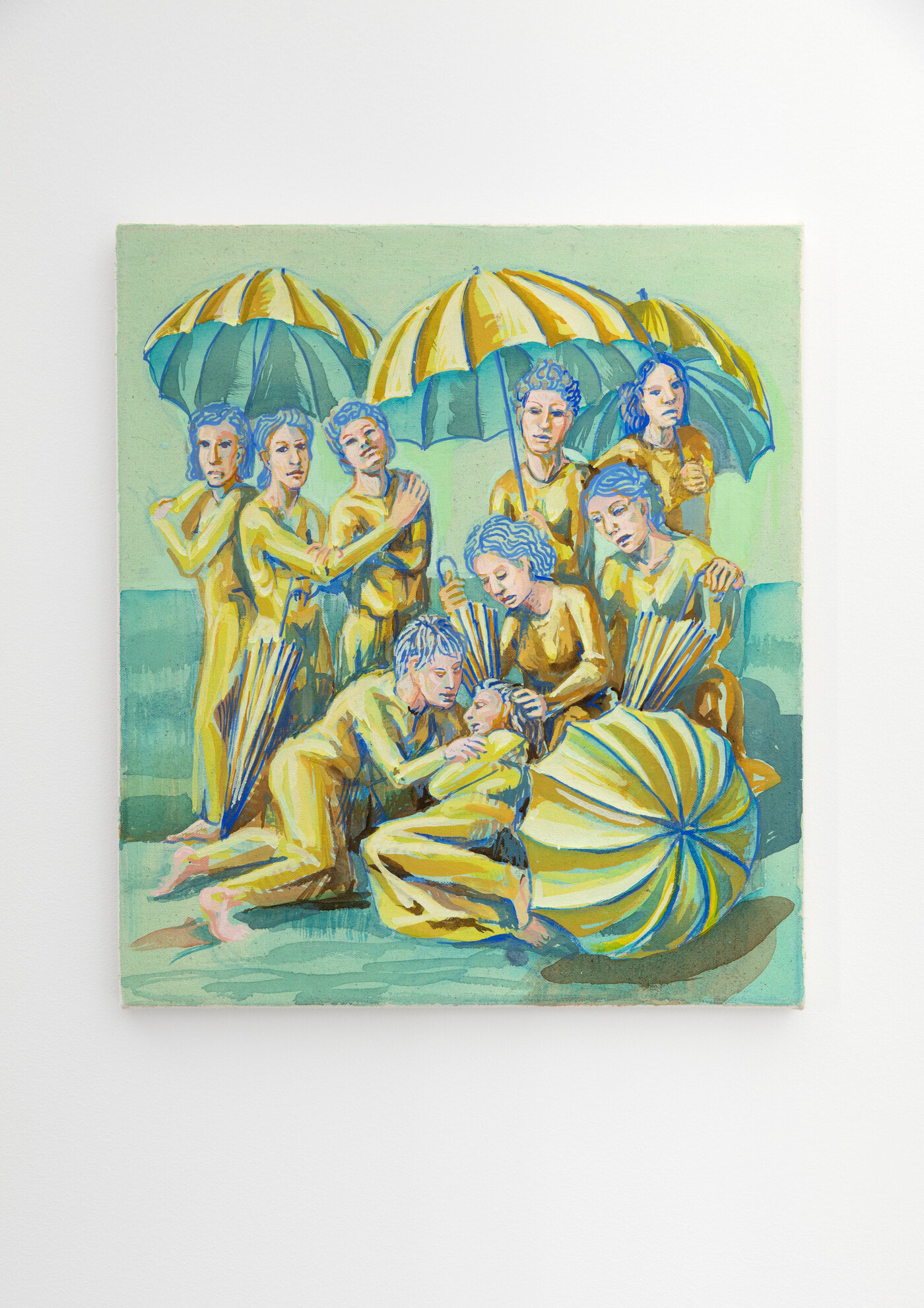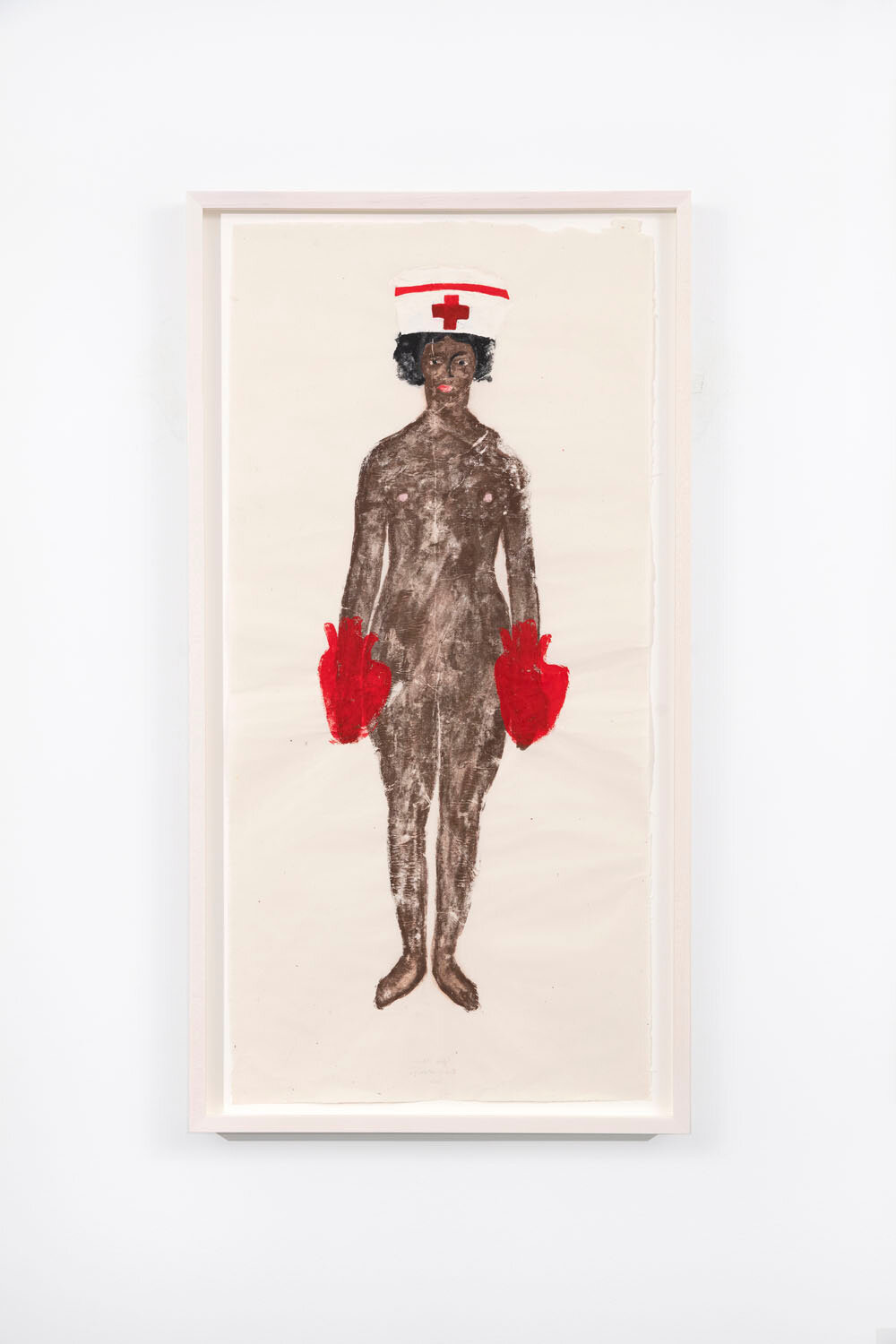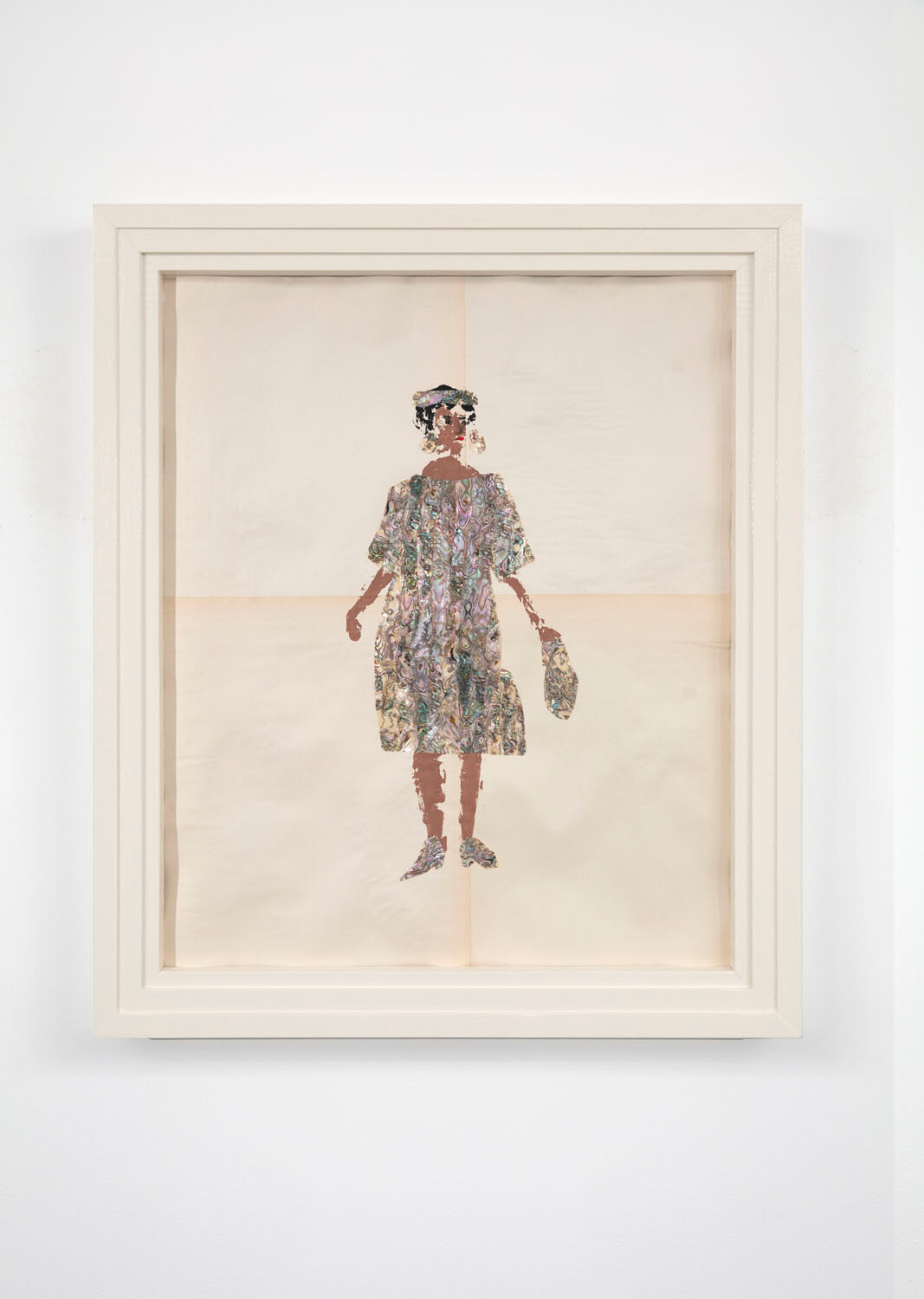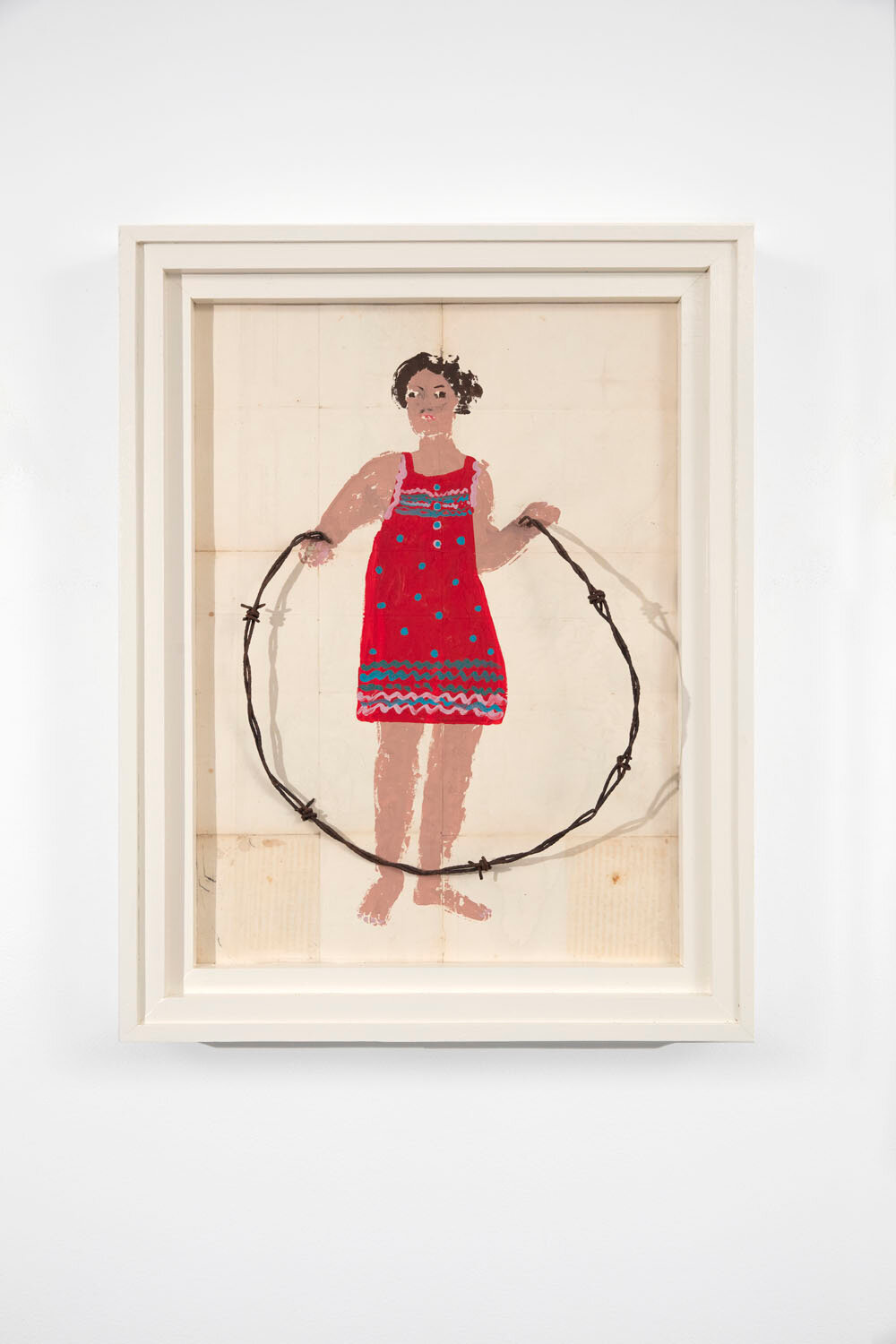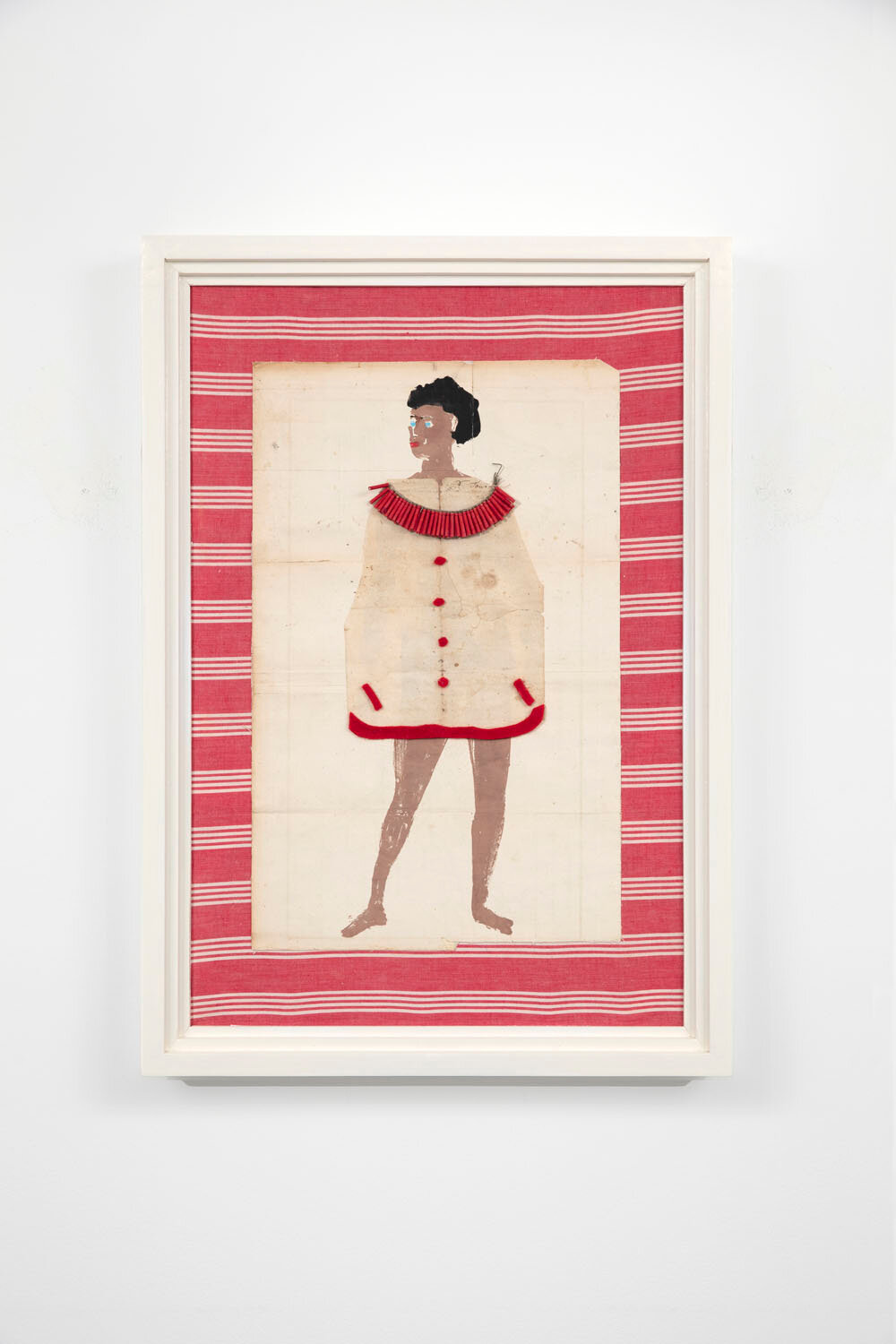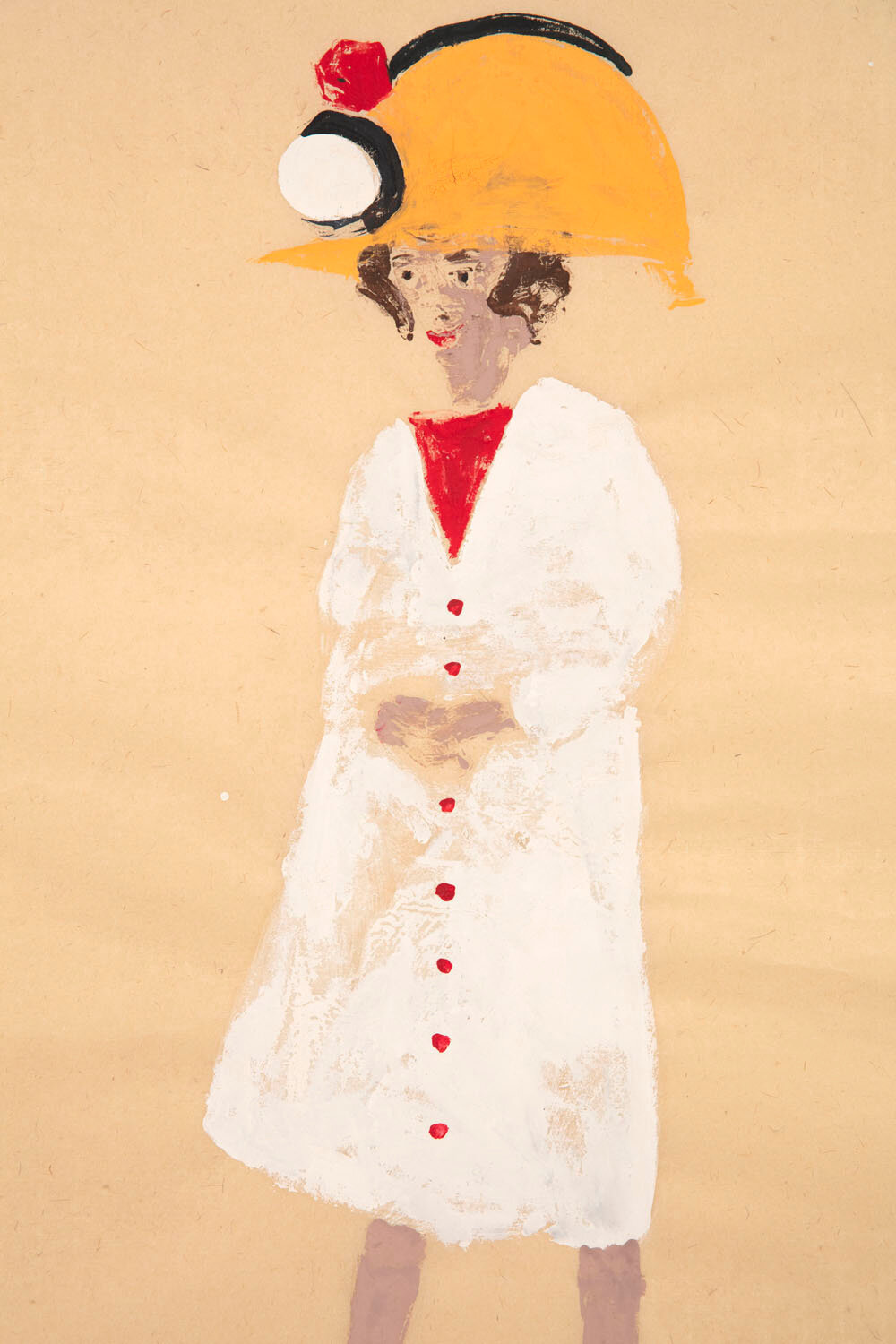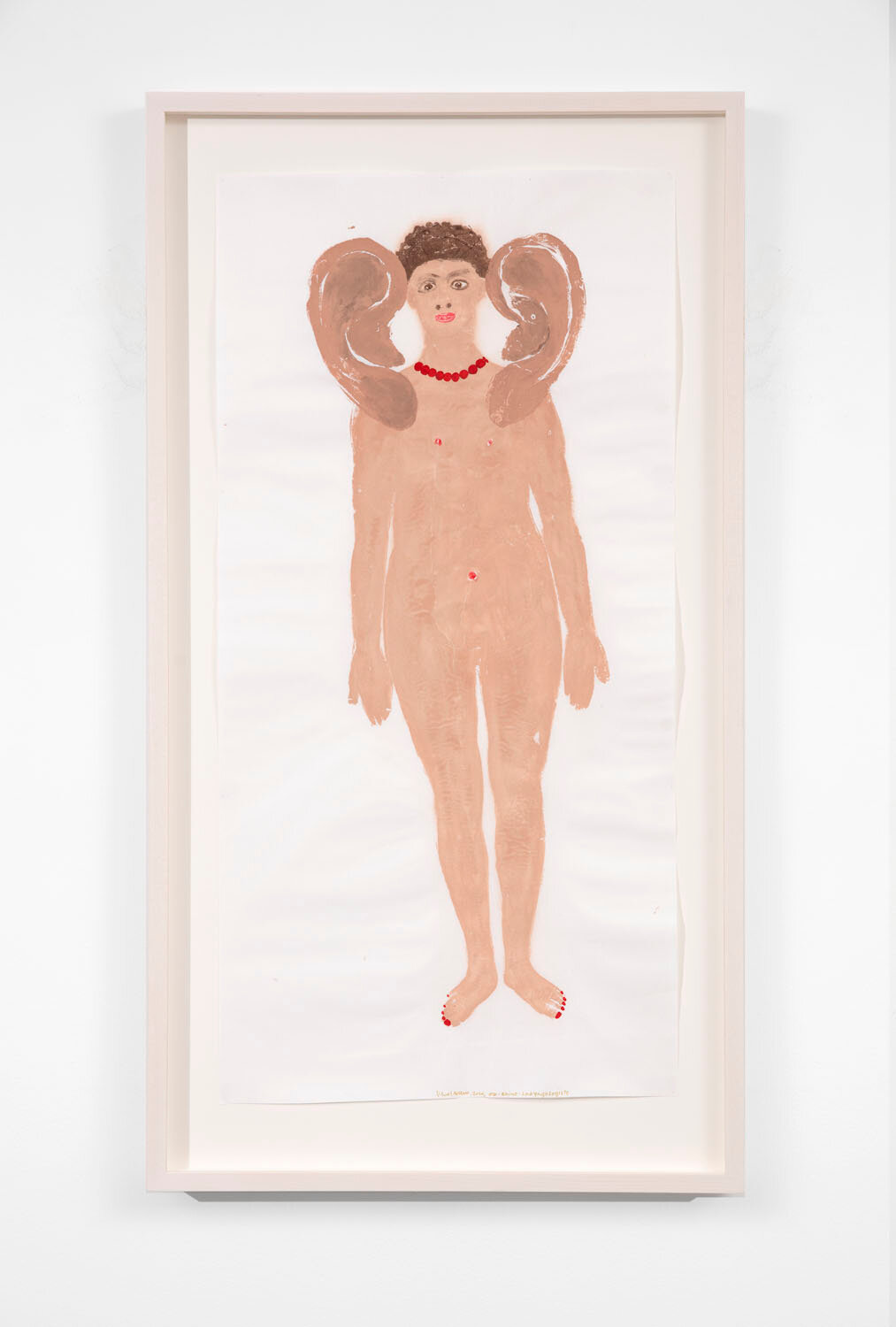Anti/Body
Works (Tap to zoom)
Press Release
Anti/Body
May 20 – July 2, 2021
513 W 20th Street
Text by Jasmine Wahi
Holly Block Social Justice Curator, Bronx Museum
There is a belief across many cultures that the body is a vessel for the soul. It functions as a protector, a container to shield one's essence from permeating toxins. It is a guardian barrier that is to be treated with reverence, respect, and tenderness. But the body – vessel, a protector—can be subverted, distorted, and manipulated, from protector to perpetrator, vanquisher to victim. Sometimes that which is meant to serve and protect inverts itself. It becomes an entity to search and destroy, and sometimes that which is meant to be the warrior is perverted into the weakling.
Jack Shainman Gallery is proud to present Anti/Body, a group exhibition featuring the work of four prolific artists: Nick Cave, Hayv Kahraman, Lyne Lapointe, and Carlos Vega. Collectively, they explore the tender relationship to the corporeal form and our understanding of the body in conflict. From the ways in which the body relates to its social context to its relative fragility and potentially unwieldy power, each artist explores this murky dichotomy of the body in space during a time of considerable turmoil or conflict.
In some instances, the artist’s reflections originate from deeply personal experiences. The cadre of characters in Lyne Lapointe’s paintings reflect the individuals that inhabited the artist’s orbit. While each begins with the same modelled form, Lapointe injects her figures with personality. The accessories included, whether they are painted, or objects adhered to the surface, bring uniqueness to the subject. While in some instances the accessories simply denote lines of work, in others they force the viewer to question safety. This is the case with Young Girl with a Skipping Rope. Is the barbed wire protecting the girl or putting her at risk? Women are often forced to navigate the world constantly asking these questions.
Similarly, Kahraman’s work considers the way the femme body exists in a state of ‘unsafety’ in the world, ultimately opening a broader dialogue around women’s bodies in states of war. Using the geopolitical implications of the pandemic, she explores larger issues of xenophobia, political dominance, and dangerous global ideologies. Kahraman pivots the discourse of epidemiologists, drawing a parallel to the language of state-sanctioned propaganda by creating layers of coded meaning and multiple entendres within the realm of her own individual history.
In Snakes (2021), the figure’s moon-faced visage, resplendent with its trademark pout and delicate unibrow, stares coldly at the viewer. She is dissected and inverted upon herself, a grotesque but beautiful kaleidoscope that has evolved over several bodies of work. The double-jointed figures are cradled within the distinct Y-Shape structure of an antibody, which Kahraman uses as an anchor throughout the series. This symbol is a visual prompt for a dynamic and radical shift in coexistence – one in which differing factions survive through a process of symbiosis and balance.
Carlos Vega’s practice is equally anchored in themes of interpersonal/inter-political tension and balance. In 2020, Vega reflected on gun violence, which was remarkably unquelled despite the raging pandemic. The three paintings exhibited in Anti/Body look specifically at the effect that losing children to gun violence has on caregivers and family. Reminiscent of Giotto’s Lamentation painting in the arena chapel, each composition features a group of adult mourners gathered protectively around the fallen body of a child. The violence is not active, but implicit. The fragility of the small bodies, as seen in Mater Dolorosa 3/21, 3/29, 3/30/20 (2020), are enhanced by the scrum of grievers. Many of the figures carry flower-laden umbrellas. A symbolic indication of both sorrow and remembrance.
While these portrayed moments are visceral and devastating, they can also serve as catalysts for action. At the core of all of Vega’s work is a sentimental range, as well as larger questions regarding consciousness, the survival of the soul, and its purpose-oriented journey. The work urges us to consider the consequence of violence – particularly gun violence.
The final artist in the exhibition, Nick Cave, also explores the prevalence of systemic violence. In 2020, the COVID-19 pandemic existed in tandem with a resurgence of chronic police violence against Black and Brown bodies, prompting Cave to revisit his iconic Soundsuits, which were originally created as protective beings in response to the police violence against Rodney King in 1991. The newest iterations of these effervescent colossuses, entitled Soundsuit 8:46, are also in direct response to police brutality, in this case titularly alluding to the amount of time that it took for Officer Derek Chauvin to strangle George Floyd to death*.
Like earlier Soundsuits, these new works celebrate race and call together community, yet they also emulate a melancholic solemnity. In this way, the works are both a funerary apparatus and a protector, offering a mourning shroud for those it must keep safe. Soundsuit 8:46 is a painful but essential reminder of what has happened, not only to George Floyd, but to scores of Black people. The piece is also an antidote to this continuously reopened wound, as it presents us with the opportunity to hope for a future where Black Lives genuinely matter. It inspires us to fight against tyranny and oppression. It is our salve against stasis.
While the tragic realities of the last year (COVID-19, systemic fatal police brutality against Black and Brown people, the reign of Neo-Facists), gradually slide out from the foreground into a whispered dream in the Western World, Lapointe, Kahraman, Cave, and Vega do not forget. As a collection, Anti/Body is a call to remember. It is a reminder that our yearning to ‘move on’ and expunge the painful bits of our past is, in and of itself, a violence. The work in this presentation forces us to remember, even when it is painful. For to press a hurt away is to make it go deeper. To forget is to erase. To erase is to harm. Although gut wrenchingly seductive and beautiful, these works are the scars tattooed upon our collective memory to remind us of our ability to be violent and violated, to be victim and perpetrator, to be antibody and anti-body.
*It was recently revealed that the amount of time Chauvin held his knee on Floyd’s neck was over nine minutes. Moving forward Nick Cave will utilize this updated information.
